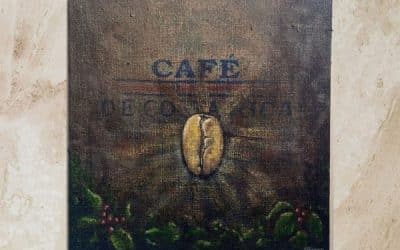What are Costa Rica’s hidden jungle ingredients?
Costa Rica’s jungles hold a treasure chest of forgotten flavours that once nourished local communities long before supermarkets and modern menus. These include wild tubers, jungle fruits, native nuts, and herbs that hold both culinary and medicinal value.

Pejibaye (Peach Palm Fruit)
This fibrous orange fruit, harvested from spiny palm trunks, was once a staple boiled and served with mayonnaise. It’s rich, nutty, and surprisingly filling—often compared to a mix between sweet potato and chestnut.
Quebracho Root
Known for its bitter bite, this root was traditionally used in teas to soothe digestion. While not for the faint of palate, a light infusion with honey and lime offers an earthy tonic.
Borojo
A pulpy jungle fruit from humid zones, Borojo has a punchy, fermented aroma but is packed with amino acids and is prized for stamina-boosting qualities. It’s often blended into smoothies with cacao and banana to tame its sharpness.
Chilamate (Wild Guava)
This wild fruit bursts with tartness and is perfect for jams, chutneys, and even cocktails. It was often foraged by children walking to school, a tangy memory of rural mornings.
Zapote Negro (Black Sapote)
Don’t let the pudding-like texture fool you—it’s a dessert lover’s secret. Sweet, dark, and almost chocolatey, it’s traditionally eaten with a splash of orange juice or blended into a smoothie with cinnamon.
Why don’t these ingredients appear on most restaurant menus?
Many of these ingredients are either hyper-seasonal, hard to cultivate commercially, or have simply slipped out of culinary fashion. They rely on local knowledge, wild harvesting, and smallholder farms—elements rarely scaled in the hospitality industry.
How can you cook with these wild ingredients at home?
To cook with Costa Rica’s wild flavours, start simple and respect the ingredients’ roots. These foods were never about fuss—they were about nourishment and connection to the land.
Pejibaye Patties
Mash boiled pejibaye with garlic, salt, coriander, and egg. Shape into patties and pan-fry until golden. Perfect with a dollop of yoghurt and lime.
Chilamate Salsa
Blend wild guava with chilli, onion, and a splash of vinegar for a sharp salsa that pairs with grilled fish or roasted vegetables.
Borojo Energy Shake
Mix one borojo pulp, half a banana, raw cacao, and ice. Add a touch of honey if needed. It’s a jungle-style pick-me-up.
Zapote Breakfast Bowl
Scoop the soft flesh into a bowl with granola, coconut shavings, and a drizzle of local honey. Rich in fibre, potassium, and satisfaction.
Where can you find these foods today?
Your best bet is local ferias (farmers’ markets), small-town sodas, and the back gardens of Costa Rica’s older generation. Rural communities still hold this knowledge tightly, passing it on through cooking, not cookbooks.
What do these forgotten foods tell us about Costa Rica’s history?
They reflect a time when Costa Ricans lived more symbiotically with nature, understanding seasons and respecting the forest’s gifts. Recipes weren’t written—they were remembered, tasted, and shared. Each ingredient tells a story of survival, creativity, and deep connection to the land.
FAQ
Are these ingredients safe to eat for foreigners?
Yes, but always purchase from reliable sources. Some may require preparation methods to neutralise bitterness or toxins.
Can I export these foods?
Most can’t be exported fresh due to perishability, but some are available in dried or processed form.
Are any of these considered superfoods?
Borojo and pejibaye are nutrient-rich and often labelled as natural energy boosters.
Do restaurants offer traditional dishes using these ingredients?
A few farm-to-table and indigenous-focused restaurants are reviving them. Ask local chefs or look for menus with “ancestral” or “etno-gastronomic” references.
What’s the best time of year to find them?
The rainy season is peak for foraging, especially May to October.
Are any of these endangered or protected?
Not generally, but sustainable harvesting is key—avoid over-foraging and support local growers. Can I grow these ingredients myself in Costa Rica?
Some, like pejibay






